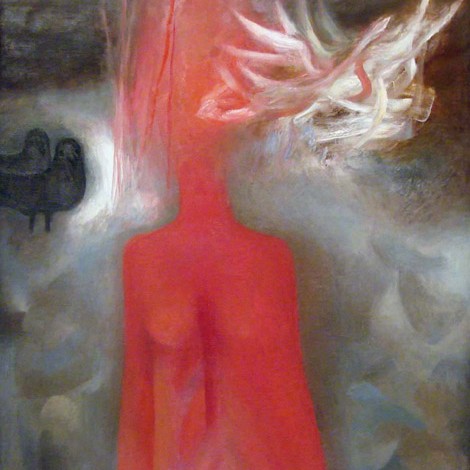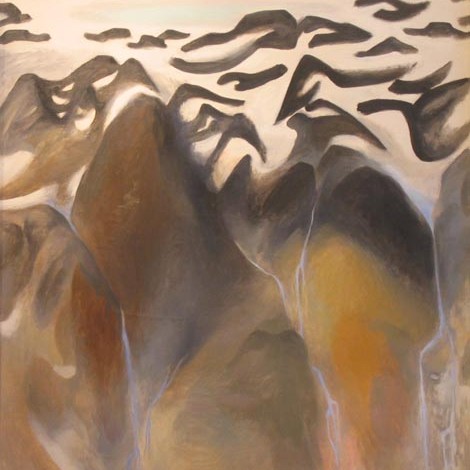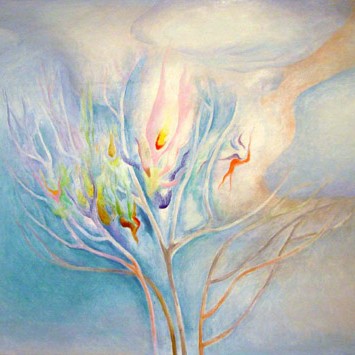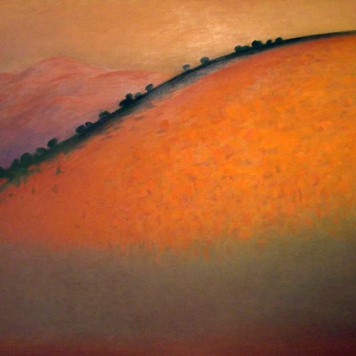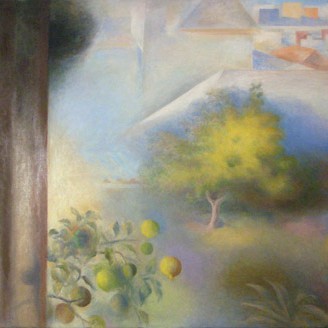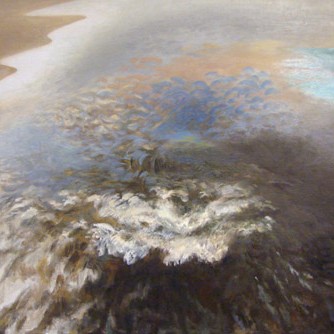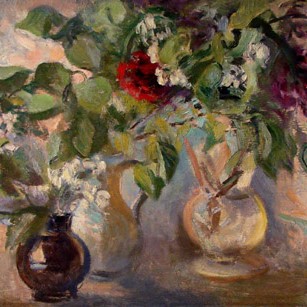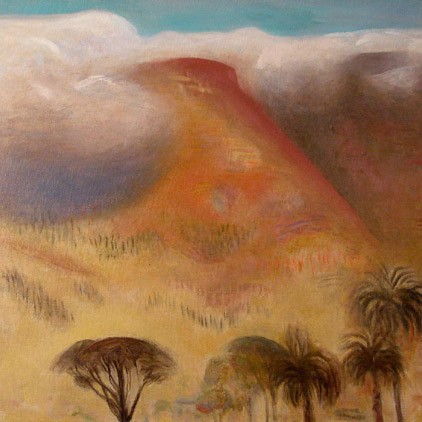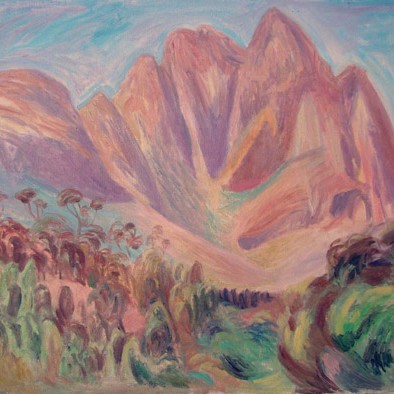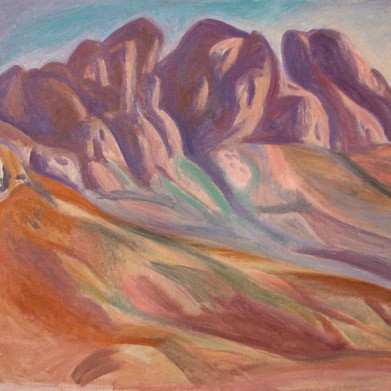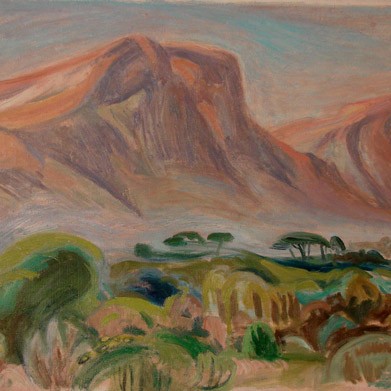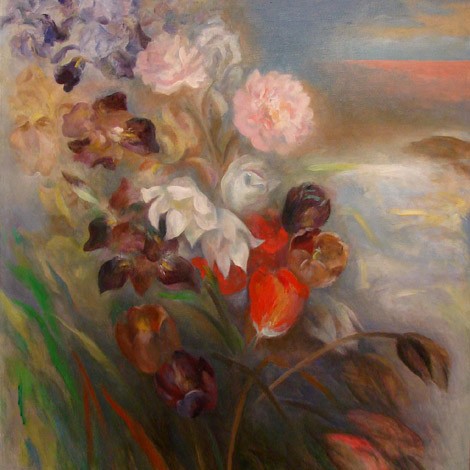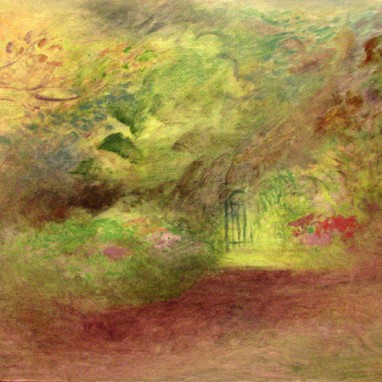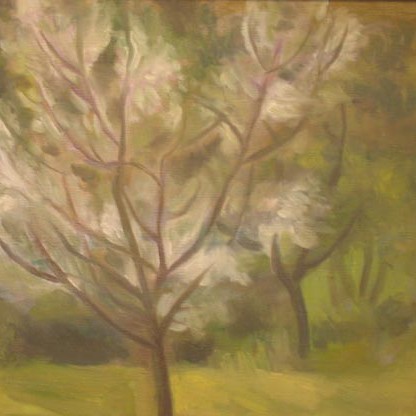Exhibition > Past > Haus Gallery
Haus Gallery 28.11.2006-12.01.2007
1
Anniversary exhibition
Today Olga Terri lives and works quietly in the centre of Tallinn, trying to avoid public attention. During the time when every week a couple of exhibitions are opened, general surveys and monographies are published, Terri has mildly refused to expose her creation. What’s done is done. Therefore the present exhibition is quite a discovery, even though no new works are being exposed here and a number of works are older than 50 years. A cross-section of the creation of Olga Terri’s creation enables in the first range to cast a glimpse on the story of development of one of the most independent artists, whose every work could be regarded as an event. Terri has never worked “just like this”, for exhibitions or sales. Each step here is justified; each threshold has been overcome without hesitations.
In a rare interview Terri has mentioned Eerik Haamer and Johannes Greenberg – her teachers as her greatest influences. But when we ask which painting technique – related words of wisdom have influenced her the most, Terri answers that no, this was not painting that she learned. Sometimes Greenberg used to come quietly to her easel, saying nothing, only making a couple of corrections. First of all Terri still learnt the attitude towards people and life. Since that period Terri is similarly to Haamer an observer, the one with a sharp eye. But differently from her teacher she is never enraptured, funny, and grand – she is quiet, meditating, and thoughtful. From the 1940ies are well known Terri’s prison scenes which have been solved by purely Haamer-style brush strikes that were carried by human sympathy, understanding and perception of tragedy.
At the present exhibition are mainly exposed landscapes. Landscapes of home, both at Mähe and at her sister’s place in the Republic of South Africa. No impression has ended up at Terri’s paintings immediately, as a burst. Taking a fancy to the African scenery has not brought about bright mountain depictions, expressive tints, rapture. Terri passes after receiving of the impression and prior to painting several filters that cleanse from the noise precipitation. A painting is for Terri not a place, where to express transitory emotions. A gate buried in fog at Mähe or mountains near Cape Town have both been cleansed into a meditative integer, where something is sort of remembered, understood, but just by a graze. Looking into a garden does not mean for her looking for painting technique – related excuses, but it is pondering, a secular religious service in the course of which into the garden gather traces from the childhood, the current situation, a hunch of the future departure.
Something that has made people wonder in case of Terri during decades is her seemingly “outsider’s” approach to art. Here we can detect no clichés that are waiting for us in still-lives. Here are no familiar form handlings upon landscape depiction, the colour rain that is sometimes regarded compulsory in painting. It is rather a fatality of the talent type that Terri’s sense of the world is being expressed in painting. An understanding of the fact that one should not paint visible things, but should render everything that the depicted objects are talking about and that is a deep, convinced, slightly sad and honest approach.
